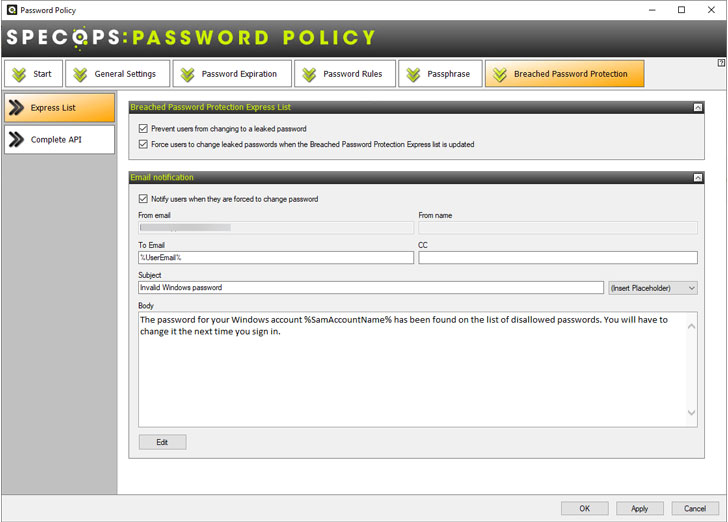As businesses move to a remote workforce, hackers have increased their activity to capitalize on new security holes. Cybercriminals often use unsophisticated methods that continue to be extremely successful.
These include phishing emails to harvest credentials and gain easy access to business-critical environments.
Hackers are also using ransomware to hold your data hostage, demanding a ransom payment in exchange for a decryption key that unlocks your stolen data.
When dealing with a cyberattack, there are practical steps you want to follow.
What do these steps include?
Quickly contain and isolate critical systems Report the hack to your customers and business stakeholders Engage the help of law enforcement Enact your disaster recovery and business continuity plans Analyze the attack, and remediateQuickly contain and isolate critical systems
This first step is necessary: quickly contain and isolate critical systems. There is a chance that if you discover ransomware or other evidence of the hack on your network, it may not have made it to all business-critical data and systems.
Isolate known infected clients from the network as soon as possible. This action prevents any change the infection or malicious code will spread from the isolated clients.
Using a systematic approach of isolation, and containment, while cleaning up the infection, is one of the best ways to regain control of the network and eliminate lingering malicious code.
Report the hack to your customers and business stakeholders
Time and again, organizations are judged based on how they handle situations where a system hack or data breach has occurred. Reporting security incidents is always the best approach. Organizations suffer negative consequences for any type of coverups or delays in disclosing information.
While not pleasant to do so, disclosing security incidents as quickly as possible creates an atmosphere of transparency that generally reflects well on the organization in the long run. Organizations may be liable under compliance regulations to report any breach of security as well.
Engage the help of law enforcement
If your business is a victim of a cyberattack, engaging with law enforcement is an important step. Law enforcement agencies such as the Federal Bureau of Investigation (FBI) in the United States can open the door to various resources to help with the aftermath of the attack.
The FBI and other organizations can help investigate cyberattacks and intrusions. They work to collect and share intelligence for the greater good, unmasking individuals and groups responsible for malicious cyber activities.
Alerting these agencies of a cyberattack can promote the greater good of bringing cybercriminals to justice.
Enact your disaster recovery and business continuity plans
It is essential to develop an effective disaster recovery plan as part of your overall business continuity plan. The disaster recovery plan outlines the steps needed to operate the business with degraded systems or missing business-critical data.
After discovering a hack of your business, the disaster recovery plan should be enacted. These plans reestablish business continuity as soon as possible. They also get everyone on the same page for streamlining business processes, even in a degraded state.
Analyze the attack, and remediate
After system integrity has returned to normal and the imminent security threat has been removed, businesses will want to analyze the attack and remediate any vulnerabilities.
This root/cause analysis will help to determine any weaknesses in the cybersecurity posture.
Organizations need to assess weaknesses in security continuously. No matter how large or small, any type of breach or successful attack should be used to understand where the security posture can be improved.
Improving password security – a necessary step
Compromised credentials are a significant root cause of modern data breaches. IBMs Cost of a Data Breach Report 2020 noted:
"One in five companies (19%) that suffered a malicious data breach was infiltrated due to stolen or compromised credentials, increasing the average total cost of a breach for these companies by nearly $1 million to $4.77 million. Overall, malicious attacks registered as the most frequent root cause (52% of breaches in the study), versus human error (23%) or system glitches (25%), at an average total cost of $4.27 million."
Organizations must bolster account security, including preventing weak or breached passwords used in the environment. All too often, end-users choose vulnerable passwords. Hackers often use previously breached passwords that are readily available on the web in password spraying attacks and other account-based attacks.
 |
| Configuring breached password protection in Specops Password Policy |
There are very few Active Directory tools, and capabilities found natively to implement the proper protections for businesses to protect user accounts. Specops Password Policy secures Active Directory credentials by blocking the use of leaked passwords in the environment.
Wrapping Up
Data breaches, ransomware infections, and other types of hacks are all too common for businesses today. These ultimately lead to credential leaks.
Organizations must implement effective cybersecurity protections, including protecting against weak passwords in the environment. Specops Password Policy is a solution that helps organizations to get a handle on password security in Active Directory.
Learn more about Specops Password Policy, and download a free trial version here.
Found this article interesting? Follow THN on Facebook, Twitter and LinkedIn to read more exclusive content we post.
.png)
 3 years ago
336
3 years ago
336 















 Bengali (Bangladesh) ·
Bengali (Bangladesh) ·  English (United States) ·
English (United States) ·